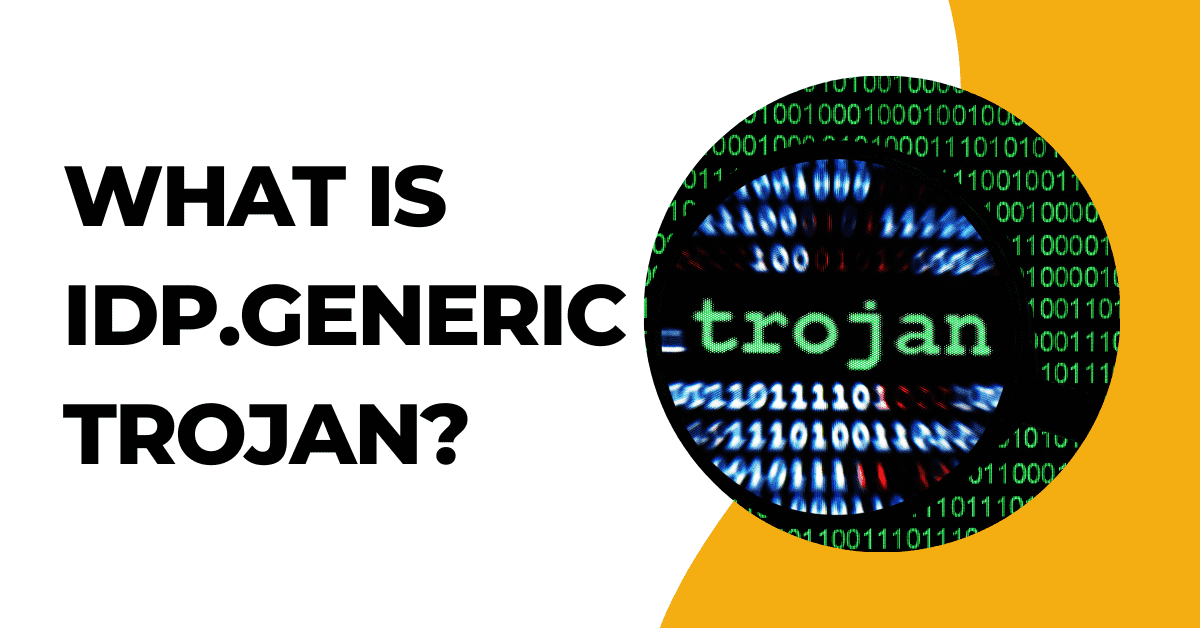Is IDP.Generic a Malware? How to Remove it?

Many Windows users are experiencing IDP.Generic virus detection on their files.
Basically, your antivirus will notify you that it has detected a file containing IDP.Generic.
Since the IDP.Generic threat isn’t linked to any particular file, it could affect a wide variety of files.
For instance, some users were seeing the IDP.Generic threat when utilizing game files, whilst other users received same danger when using a windows file.
Although antivirus software is not required for this threat detection, Avast antivirus was most frequently used by those who encountered it. Naturally, you wouldn’t be able to utilise other programmes or play your games if your antivirus finds such viruses in game-related files.
What is IDP.Generic Trojan?
The term IDP is referred to as “Identity Detection Protection”. Your antivirus programme will inform you whenever a file behaves maliciously and raise this flag. This feature is made primarily to counteract malware infection, and virus-related software, and it also guards against file theft from your file system.
IDP generic denotes that the file was picked up by an Identity Protection detection component of your antivirus. This means that whenever a file performs an action that is similar to malware that sets off the flag.
These viruses, which can lead to identity theft, can transmit through software vulnerabilities, infected email attachments, and deceptive online ads.
[Read more: 5 Most Secure Browsers for Privacy 2023]
Should You Ignore the IDP.Generic?
Since the file has a.generic file extension, which signals that it is generic, the antivirus isolates and deletes the file when this danger is found. Be cautious, though, Antivirus software typically displays a notice about an active threat on the monitor screen. These messages are frequently incorrect. It is eventually safer for your system to get rid of the idp generic in the event of a recurring attack.
Generally speaking, you shouldn’t disregard any alerts from your antivirus software. But, speaking of idp.generic, the majority of its cases are false positives. Though you shouldn’t fully disregard it. Therefore, the best course of action would be to utilize another antivirus programme and re-scan the file rather than immediately deleting the idp generic file. Additionally, you ought to update your antivirus software and run a complete antivirus scan.
[Read more: 8 Android Settings to Make Your Android Device More Private]
What Should I Do If I Find IDP.Generic a False Positive?
The most frequent reason for this false positive flag is typically an antivirus application with an out-of-date configuration. This merely indicates that your antivirus programme is out-of-date, and if the false positives persist even after the update, you should upgrade to a new antivirus programme.
In order to avoid your antivirus blocking the file, you should first remove it from the virus vault.
You can achieve this by carrying out the actions outlined below.
- Launch your Avast security programme.
- Choose Virus Chest in Protection
- Right-click your file
- Add your file to the exclusions.
Even though these instructions are for Avast antivirus, they ought to work for other antivirus programmes as well. Every antivirus programme has the ability to restore the files from its virus vault.
[Read more: Deep Web vs Dark Web – 4 Key Differences You Should Know]
How to Remove the IDP.GENERIC File?
If you wish to delete this file from your computer, bear in mind that you must first determine whether it is a virus; otherwise, we strongly advise leaving it alone.
Using the techniques described above, you can determine whether a file is infected with malware or viruses.
Once you’re sure it is a harmful file, you can simply boot into safe mode and run a full computer scan with a malware removal tool.
Conclusion
When a warning about a potentially harmful idp.generic file surfaces, many people immediately attempt to remove it from the OS. To avoid a crash and other software issues, it is advisable to remove the file only if it is not attached to any other crucial OS programme.
There is no need to respond immediately in light of reports of a misleading alert from antivirus software. First, try to update your antivirus software, and run another system scan. If this approach is unsuccessful, your antivirus programme will advise you to either delete or quarantine the idp.generic file. Then you can remove the file by yourself.






